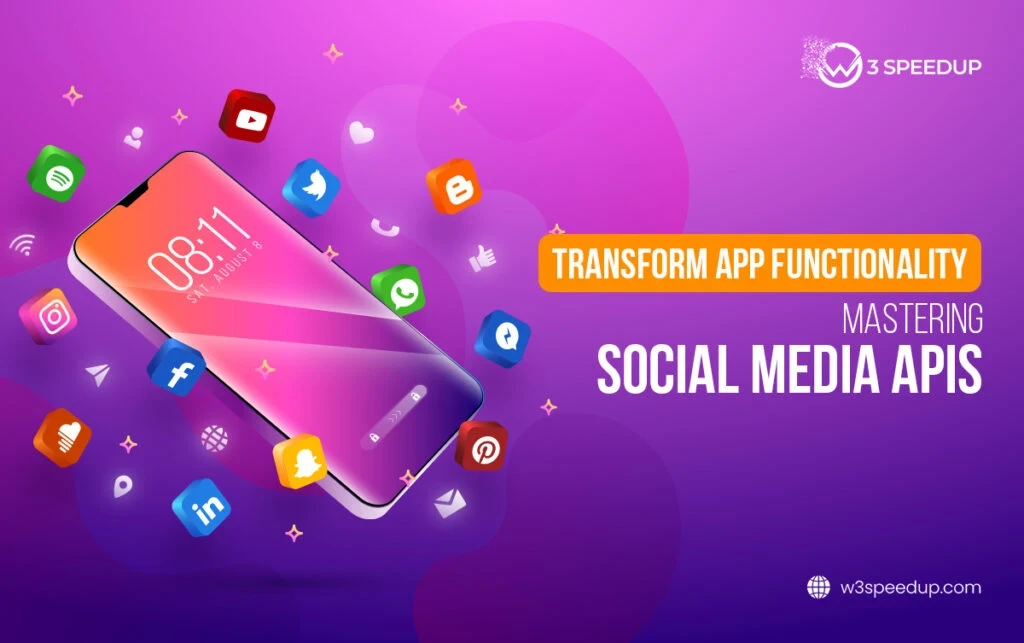Social media APIs have become essential tools for developers looking to integrate powerful features into their applications. By leveraging these APIs, developers can add dynamic content, streamline user authentication, and improve app interaction with social media platforms. To learn more about integrating social media data into your app, you can explore additional resources at Data365.
Learn how to create richer, more engaging experiences for your app users with Social Media API
 Understanding the Basics of Social Media API Integration
Understanding the Basics of Social Media API Integration
Social media APIs are programming interfaces that allow developers to interact with data from social media platforms like Facebook, Twitter, Instagram, and LinkedIn. Through API integration, developers can access user profiles, posts, comments, likes, and more, making it easier to create personalized experiences in their apps. API integration typically involves making requests to the social media platform’s server, which returns structured data that can be used within the app.
To integrate a social media API, developers first need to understand the authentication process. Most platforms use OAuth (Open Authorization), which ensures secure data exchange between apps and the social media platform. With OAuth, users can authorize an app to access their data without sharing their login credentials, making the process both secure and convenient.
The next step in API integration is setting up the API request and handling responses. API requests typically use REST (Representational State Transfer), a widely adopted architecture for making lightweight HTTP requests to servers. When the server responds with the requested data, developers can use this data to display dynamic content, track user behavior, or even implement automated social media posting features.
 Key Features to Enhance User Experience with Social Media API
Key Features to Enhance User Experience with Social Media API
Utilizing social media APIs can significantly enhance user experience by offering a variety of features that increase engagement and personalization. One of the most popular features is social media login, which simplifies the sign-up process by allowing users to log in with their existing social media accounts. This eliminates the need to create new credentials and reduces friction for users, leading to higher registration and login rates.
Another feature enabled by social media APIs is the ability to embed live social feeds directly into the app. This real-time content can keep users updated with the latest posts, comments, and interactions from their social media accounts without ever leaving the app. By integrating live feeds, apps become more dynamic and interactive, providing users with a reason to stay engaged.
In addition, APIs allow developers to gather valuable insights about user preferences and behavior. Through analytics tools offered by social media APIs, developers can track how users interact with their app, what content resonates most, and how user behavior aligns with broader social media trends. This data can be used to refine app features, improve content strategies, and boost user retention.
 Cross-Platform Compatibility Using Social Media APIs
Cross-Platform Compatibility Using Social Media APIs
One of the biggest advantages of using social media APIs is the ability to create cross-platform compatible apps. Today’s users engage with content on multiple devices, and they expect a seamless experience whether they are using a smartphone, tablet, or desktop. Social media APIs help developers ensure that their apps can interact with social platforms across various devices and operating systems.
APIs allow developers to retrieve the same social media data, regardless of the platform or device. This cross-platform compatibility ensures that users can interact with the app consistently, whether they are on Android, iOS, or a web browser. Additionally, APIs can be configured to automatically adjust content formatting for different screen sizes and resolutions, ensuring an optimized experience for all users.
Developers can also use social media APIs to create shareable content that works across multiple platforms. For example, apps can allow users to create content within the app, such as photos or videos, and then share it directly to their social media accounts without needing to leave the app. This capability not only enhances the user experience but also increases the app’s visibility and engagement by leveraging social sharing features.
 Best Practices for Optimizing API Performance in Social Media Apps
Best Practices for Optimizing API Performance in Social Media Apps
When integrating social media APIs into an app, optimizing performance is critical to ensuring a smooth user experience. Poorly optimized APIs can lead to slow loading times, failed requests, and a negative overall experience for users. Here are a few best practices for maximizing API performance:
- Caching Responses: One way to improve performance is by caching API responses. When data from a social media platform is requested frequently, caching the response can reduce the number of API calls, which in turn speeds up the app. For example, instead of repeatedly fetching a user’s profile picture from the API, developers can store it locally and only refresh the cache periodically.
- Rate Limiting Awareness: Most social media platforms impose rate limits on their APIs, which limit the number of requests that can be made within a certain time period. Exceeding these limits can result in failed API calls or temporary bans from the platform. Developers should be aware of these limits and ensure that their apps make efficient use of API requests by only fetching data when necessary.
- Error Handling: Proper error handling is essential for optimizing API performance. Apps should be able to handle various types of errors, such as network issues, authentication failures, or server-side problems, without disrupting the user experience. Implementing robust error-handling mechanisms allows the app to recover from API failures gracefully, ensuring that users remain unaffected.
- Reducing Payload Size: Another way to optimize performance is by reducing the size of the data (or payload) being transferred between the app and the API. Social media APIs often return more data than is necessary for the app’s functionality. By using query parameters to request only the data that is needed, developers can reduce the size of API responses and speed up the app.
- Monitoring and Analytics: Finally, it’s important to monitor API performance regularly. By using analytics tools, developers can track the performance of API requests, identify bottlenecks, and optimize their code accordingly. Monitoring tools can also help developers stay within rate limits and detect any issues with the API or the social media platform itself.
Social media APIs offer powerful ways to enhance the functionality and user experience of modern apps. By understanding the basics of API integration, utilizing key features, ensuring cross-platform compatibility, and following best practices for optimization, developers can create seamless, engaging, and efficient applications that take full advantage of social media data. For more detailed insights on API integrations and to explore further possibilities, you can check out Data365.



